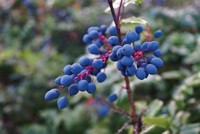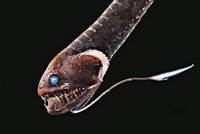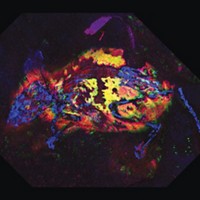Advertisement
Grab your lab coat. Let's get started
Welcome!
Welcome!
Create an account below to get 6 C&EN articles per month, receive newsletters and more - all free.
It seems this is your first time logging in online. Please enter the following information to continue.
As an ACS member you automatically get access to this site. All we need is few more details to create your reading experience.
Not you? Sign in with a different account.
Not you? Sign in with a different account.
ERROR 1
ERROR 1
ERROR 2
ERROR 2
ERROR 2
ERROR 2
ERROR 2
Password and Confirm password must match.
If you have an ACS member number, please enter it here so we can link this account to your membership. (optional)
ERROR 2
ACS values your privacy. By submitting your information, you are gaining access to C&EN and subscribing to our weekly newsletter. We use the information you provide to make your reading experience better, and we will never sell your data to third party members.
Biomaterials
Fruit’s metallic blue caused by lipid nanostructures
Berries could use the color to advertise their nutritional benefits to birds
by Laura Howes
August 6, 2020

Blue is not a common color in plants, and metallic blue even less so. A team of scientists in Europe has now uncovered an unexpected source for the iridescent blue hue of one plant’s berries.
The phenomenon behind the shiny blue is called structural color. Certain nanosized structures can interact with visible light to generate colors without pigments. Insects and some plants rely on this phenomenon for their colorful displays.
For example, in 2012, Silvia Vignolini at the University of Cambridge showed that the berries of Pollia condensata contained a helical arrangement of cellulose nanorods that scattered light to produce a blue color (Proc. Natl. Acad. Sci. USA 2012, DOI: 10.1073/pnas.1210105109). But there was another metallic blue berry that kept Vignolini puzzled since her postdoc in Italy—the fruit of Viburnum tinus, a popular landscaping plant in Europe.
With help from an international group of researchers, Vignolini’s team has solved the puzzle and identified a new type of structural color in plants. The researchers found that the berries of V. tinus do contain nanostructures that scatter light, but the structures aren’t made of cellulose. Instead, the light-scattering features are layers of globular lipids. That is the first time scientists have found structural color involving the fatty compounds (Curr. Biol. 2020, DOI: 10.1016/j.cub.2020.07.005).
When the researchers used electron microscopy to look at the berry’s skin, they found blobby structures in the cell walls. But it wasn’t clear if they were made of lipids or indigestible waxes. Yu Ogawa at the University of Grenoble Alpes used different stains and chemical fixing agents so the same samples could be imaged by electron microscopy and light microscopy, allowing the team to confirm that the structures are made from lipids.

The fact that structural coloration using fatty lipids hasn’t been described before makes this work an interesting observation, says Bodo Wilts of the University of Freibourg. There may be more examples of lipid-based structural color out there, he adds, “but if there are, they are likely not very common” since they haven’t been found yet. Vignolini, however, thinks that plant researchers might have seen similar structures in other species but just didn’t realize they were looking at lipids. She intends to keep looking for more examples.
As for why the plants make these structures, Vignolini thinks the metallic blue might be a form of interspecies advertising. The shiny blue color could tell birds that the berries are full of nutritious lipids, and when the birds eat the berries, they help spread the plant’s seeds. “It’s a nice idea,” Wilts admits, “but it remains questionable until proven.”
Meanwhile, Vignolini wants to use what she’s learned from V. tinus to develop new synthetic colors. “The problem is that it’s really not easy to stabilize lipids in this type of structure,” she says. “We want to actually understand how the plant can control it, because then if you understand from the plant how actually this is possible to make, then we can actually devise a strategy to make [the structures] in an analogous way.”





Join the conversation
Contact the reporter
Submit a Letter to the Editor for publication
Engage with us on Twitter